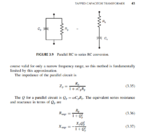prateek3790
Full Member level 2
finding rc constant of an complex rc circuit
how to find the time constant of a complex circuit, which has many series and parallel components.please see the example circuit below.
can i convert the parallel components to series one using the q value transformation. and now since all are in series the time constant can be Req*Ceq.
Req = R1 + R2
Ceq = c1c2/(c1+c2)
also since i just want to calculate time constant does it matter from where the output is being taken.
how to find the time constant of a complex circuit, which has many series and parallel components.please see the example circuit below.
can i convert the parallel components to series one using the q value transformation. and now since all are in series the time constant can be Req*Ceq.
Req = R1 + R2
Ceq = c1c2/(c1+c2)
also since i just want to calculate time constant does it matter from where the output is being taken.

